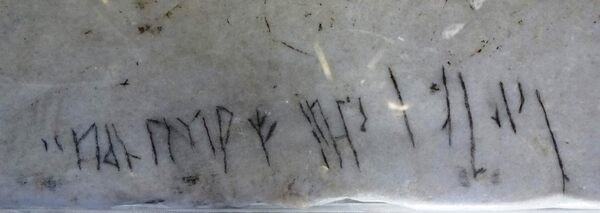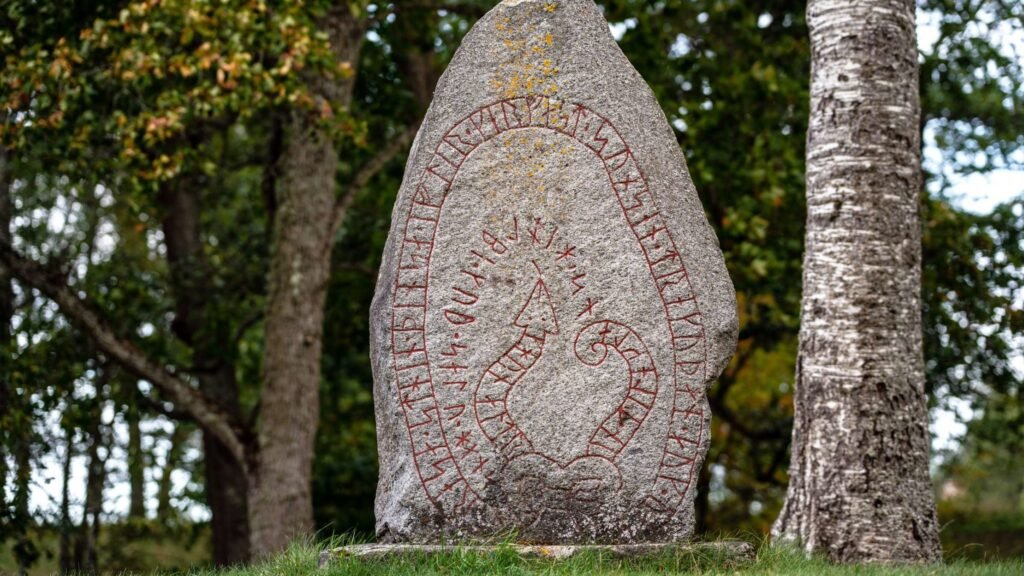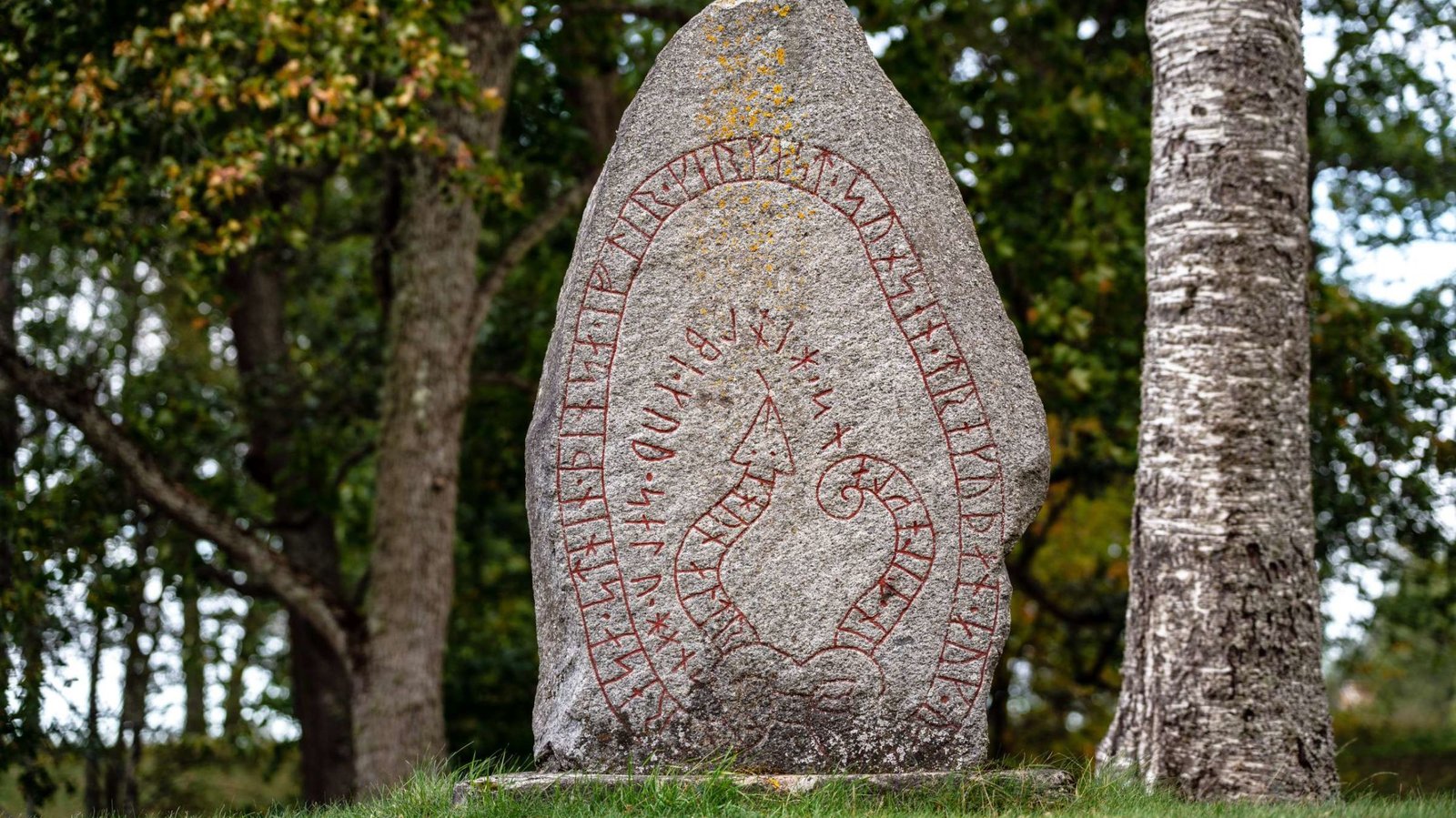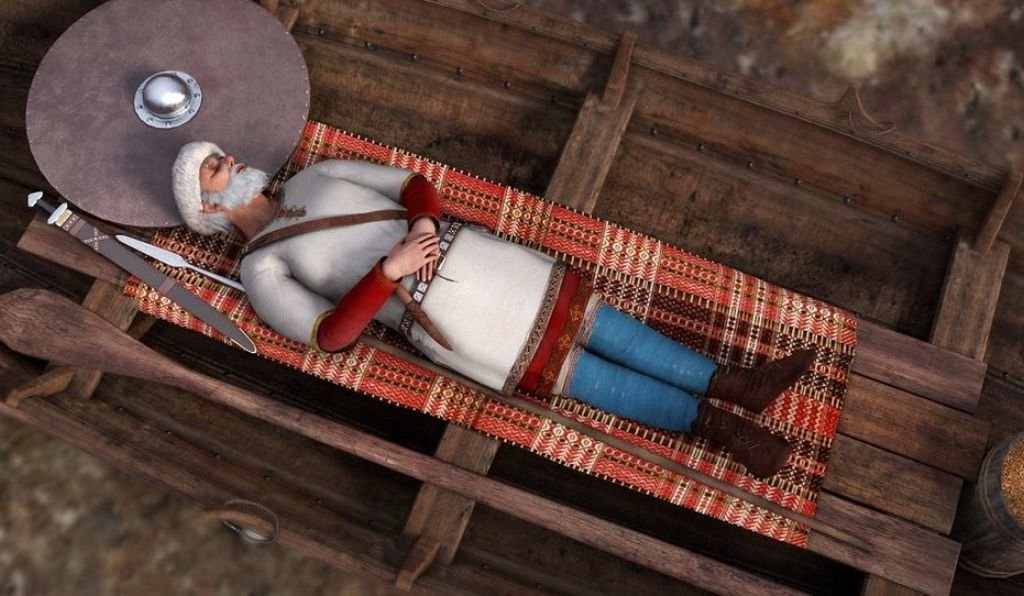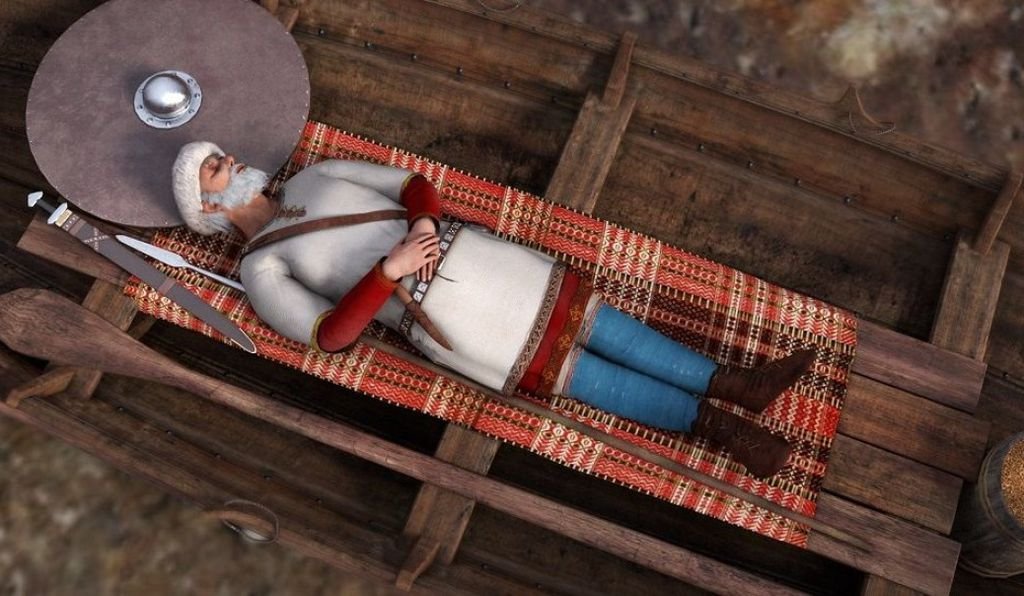Viking History: Would you cruise blindly throughout the North Sea for hundreds of miles in a wooden ship without any innovation?
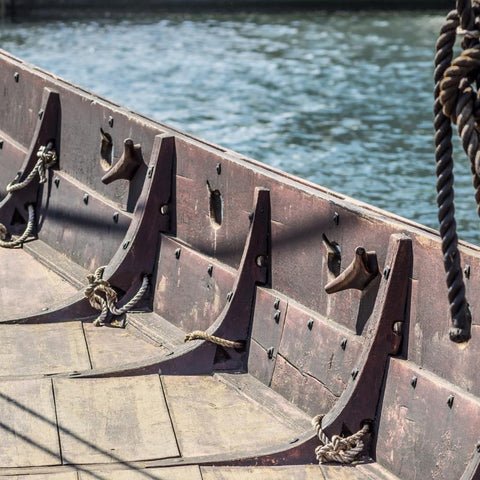
Can you think of setting sail on a wooden longship together with your fellow Vikings in search of new chances? For the Vikings this was considered land, gold & discovery. We don’t think the Vikings get enough credit for the sheer & fact they were able to handcraft a ship design years ahead

of their time allowing the ship to cruise in both deep and shallow waters; along with the ability to quickly steer and transfer people/ items. They made the tools needed for crafting these ships and collected the materialsby themselves throughout severe Northern climates. If you were to ask someone today in 2022 if they would be
happy to get on a wooden ship & sail blindly for hundreds of miles across the
North Sea with no innovation, do you believe they would? We believe that with time many individuals have actually allowed innovation
to play a dominating function in their lives which could make it really difficult for them to make such a significant change. Bravery was an understatement for the Vikings as they did anything they had to do to survive. We believe it’s healthy to reflect on those moments in time and appreciate the truth that this was before innovation,

contemporary clothes, understanding of where lands were located and simply drivenby the guts of Vikings. They used animal furs to stay warm at sea; they consumed ale as it had its benefits of keeping the stomach complete as well as dried meats & light foods they might encounter. On our next expedition through South Norway, we will be cruising on old Viking ships again to acquire an even much better reflection and gratitude for what they were able to do. We hope you get to experience cruising on a longship one
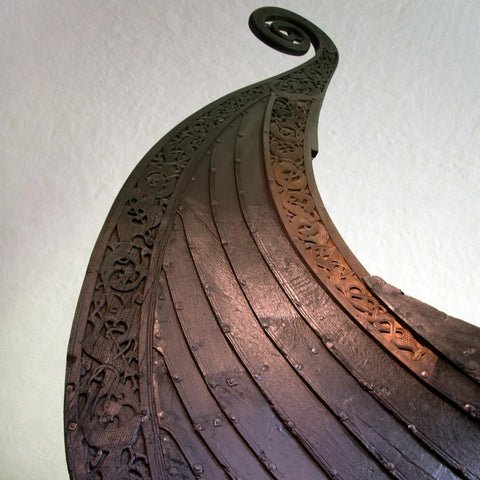
day! To view our everyday Vikingcontent follow us on our platforms below, Instagram @ Viking Lifestyles Facebook @ Viking Lifestyles TikTok @ Viking Lifestyles
Viking History: Would you cruise blindly throughout the North Sea for hundreds of miles in a wood ship with no innovation? Northern climates.
Viking History: What made the Viking ladies so strong?
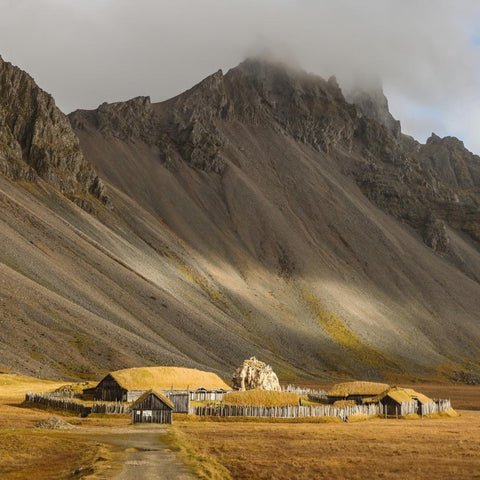
The women of Scandinavia during the Viking

period played a crucial and important role in Viking history. For everything to operate as the Vikings planned, there was much that had to be done by the females. Can you envision investing an ice-cold winter inside of a wooden Viking house with a hole in the roof without socks? Something that is not spoken of much, is the special sowing strategy Viking females used called Nalbinding (needle-binding). Nalbinding was a kind of sowing that enabled the ladies to make socks and other warm clothing that played an important part throughout winter seasons.
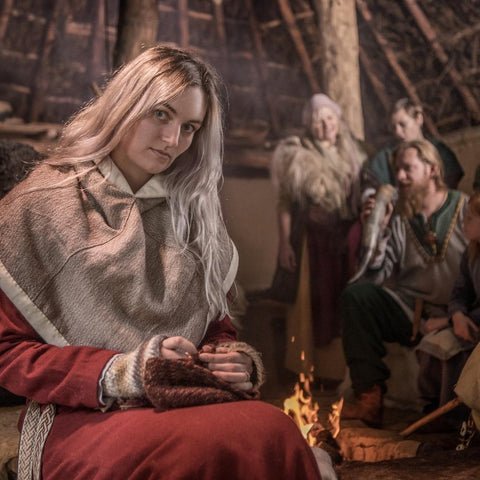
Not only did the women assist in families, however a lot of the Viking females were likewise trained and extremely efficient in protecting themselves. Compared to different other cultures, the Viking ladies of Scandinavia enjoyed lots of freedoms that consisted of the capability to ask for a divorce & & own home.
While the males were out hunting, raiding, and farming, the ladies typically took care of the home and raised children. The majority of the burial sites discovered by archeologists showed standard gender functions, guys were buried with weapons & & tools, ladies were buried with fashion jewelry & & family products.
It was really common for women to get wed in between ages 12-15 and those marital relationships were organized by households, although the female had a very strong state in the arrangement.
If a lady’s hubby died, she would instantly embrace his complete role of running the farm full time and managing his trading organization. It is things like this that make the women of the Viking age so uniquely strong. Not just did they handle the family, but they were prepared to take over everything for their family at the drop of a cent. When Viking females were buried with rings of secrets on them, it showed and spoke to their role as an effective supervisor of the home.
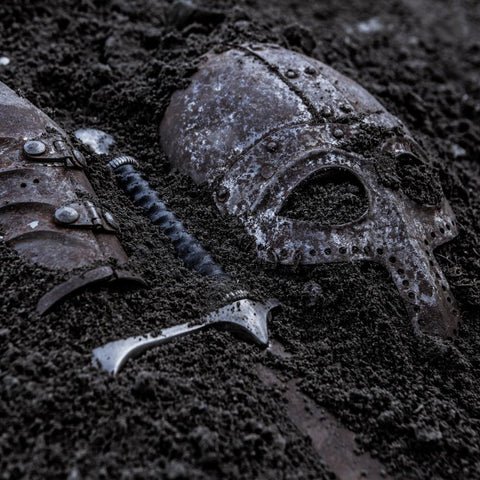
Existed female Viking warriors? Although it was not very common, there are actual findings and evidence revealing women that fought together with males. The 12th-century Danish historian Saxo Grammaticus had actually written that there were communities of “shieldmaidens” dressed like men who had actually devoted themselves to understanding fight and other skills of war, which some 300 of these shieldmaidens held the field in the Battle of Brávellir during the mid-eighth century. In his work Gesta Danorum, Saxo composed that there was a shieldmaiden with the name Lagertha, who combated along with the extremely famous Viking Ragnar Lothbrok in a fight against the Swedes. Ragnar was so impressed that he sought and won her hand in marital relationship.

As we sit back and think of the function the Viking females played in history, it goes to reveal the strength that has actually been passed down generations to the modern-day ladies of Scandinavia. In our experiences fulfilling females of Scandinavia, we have seen strength, durability, toughness, appeal, and some things you just can’t describe with words.
We value all of our Shield-maidens and toast a skål!
Viking History: What made the Viking women so strong?
The Incredible Saga of Olaf Tryggvason
In the Norse sagas, it always seems like the protagonist of the story has an unbelievable life that spans the known world of the day and that they are blessed with uncanny luck until the end. It is not hard to believe that these warriors are touched by divine fate.
The saga of Olaf Tryggvason is no different. Despite being the king of Norway for only five years from 995-1000, his story is larger than life.
Olaf Tryggvason, or King Olaf I of Norway, was a real Viking, as he is mentioned in a number of contemporary English sources as well as Skaldic poems of the day. But the epic stories of his life were only written about 200 years after his death by the Icelandic authors Oddr Snorrason and Gunnlaugr Leifsson. Their sagas have actually been lost, but were the basis for the story of Olaf recorded in the 13th century by Snorri Sturluson.
It is interesting that he had to wait until the Christian age to receive his sagas, since he is most well-known for forcibly converting Norway to Christianity. This makes him more of a villain than a hero in the eyes of many.
Nevertheless, let’s take a look at the incredible life of Olaf Tryggvason.
 Statue of Olaf Trygvvason in Trondheim, Norway
Statue of Olaf Trygvvason in Trondheim, Norway
Young Olaf
Olaf Tryggvason claimed to be the great grandson of Harald Fairhair, the first viking king of all Norway. His father was the short-lived Norwegian king Trygvvi Olafsson, and his mother Astrid Eirksdottir.
Astrid reportedly fled Norway for the Orkney Islands while still pregnant with Olaf or when he was very young. She was either fleeing her husband, or her husband’s killers, led by Harald II Greycloak.
After spending a short amount of time on the Orkney Islands, Astrid decided to send her son to the Kievan Rus, as her brother Sigurd Eirikson has a position at the court of King Vladimir at Novgorod. She sent her son east with a sister father called Thorolf, and a foster brother called Thorgils.
Unfortunately, along the way they were attacked and captured by Estonian Vikings and Olaf fell into the hands of a man named Klerkson. He heartlessly killed Thorolf, and sold the two boys on.
Fortunately, Sigurd soon encountered the boys and learned Olaf’s identity. He took both boys to the court at Novgorod, where they became the charges of King Vladimir.
Olaf Tryggvason got his revenge. One day he encountered Klerkson in the marketplace of the capital. The young boy took an axe and struck the older man in the head, killing him. The market mob wanted to chase down the boy and punish him, but he ran to his proteress, Queen Allogia. Killing at a young age is a common theme in the sagas of the great Vikings.
Olaf went on to prove himself at Vladimir’s court, and as a young man he was appointed chief of the men at arms. But this arrangement was short lived, as Vladimir soon became wary of Olaf’s popularity with the men. Olaf decided to leave before the problem could grow.
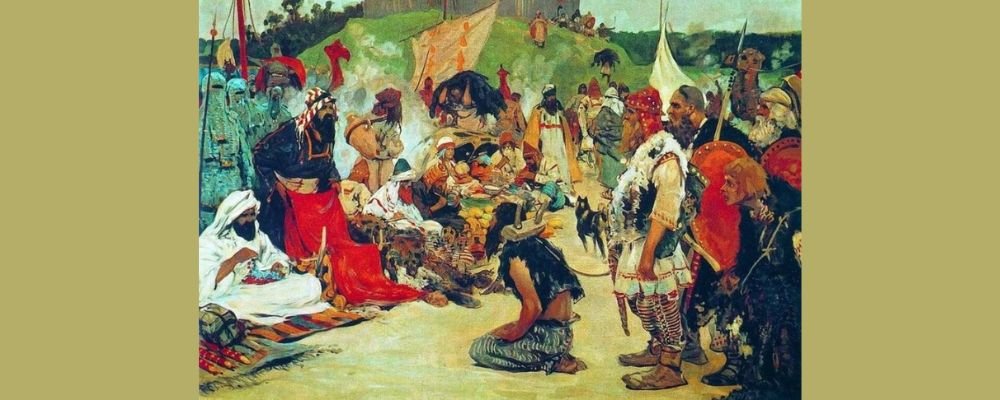 Kievan Rus Vikings selling slaves
Kievan Rus Vikings selling slaves
Olaf Tryggvason in the Balkans
Having left Novgorod with some loyal men, Olaf started raiding around the Balkans and made a name for himself as a warrior. But advantageous marriages were not just for women. In the Balkans, Olaf would make the first of a number of advantageous (and dangerous) unions.
He sailed into the territory of King Burizlerf of Wendland and met his daughter, Queen Geira. She invited Olaf to stay with her for a few days, hearing of his prowess. It was not long before the pair agreed to marry, and Olaf used his men to subdue territories that were refusing to pay taxes to Geira’s father.
His mission complete, and enriched by his new marriage, he was free to raid around Skane and Gotland. But this was not the only contact that he had with other Scandinavian Vikings. Olaf joined a force gathered by the Holy Roman Emperor Otto II, to deal with the Danish Viking, who were still pagans at this time, and convert them to Christianity.
Olaf was part of a force composed of Saxons, Franks, Frisians, and Wendlanders. They faced King Harald Bluetooth of Denmark and Haakon Jarl of Norway. The pair were defeated and fired to convert to Christianity. But while Harald embraced the new religion, Haakon quickly abandoned the pact.
But Olaf did not participate in further expeditions mounted by the Holy Emperor at this time. Geira died in 984, so he apparently left Wendland due to his grief. However, he may also have been forced out by his father-in-law, who like King Vladimir before him, was worried about Olaf’s popularity with his troops.
 Viking axe head from the Balkans
Viking axe head from the Balkans
Olaf’s Prophecy
Olaf Tryggvason started raiding again, sailing his ships from Friesland to the Hebrides. He eventually landed on the Scilly Isles, where his life changed forever.
Despite joining the army of the Holy Roman Empire, until this time, Olaf was still a pagan. Buut on the Scilly Isles, he heard of a great seer. He tested the seer before visiting, sending a decoy in his place, but they were immediately detected. This encouraged Olaf to go himself.
The seer, who may have been Saint Lide, told Olaf that he would be attacked and almost die, but would make a full and miraculous recovery. After this recovery, he would convert to Christianity and become a great king.
Not long after this, Olaf dealt with a mutiny among his men and was badly injured. When he eventually recovered, he believed that it was the prophecy at work and converted to Christianity.
He left the Scilly Isles and sailed for the British Isles. There he was invited to a thing by Queen Gyda, the widowed sister of the king of Dublin. She was looking for a new husband, and she chose Olaf from among many suitors because he had shown up in his bad weather gear rather than his riches clothing.
Again, Olaf used his military experience to help his brother-in-law and made a name for himself.
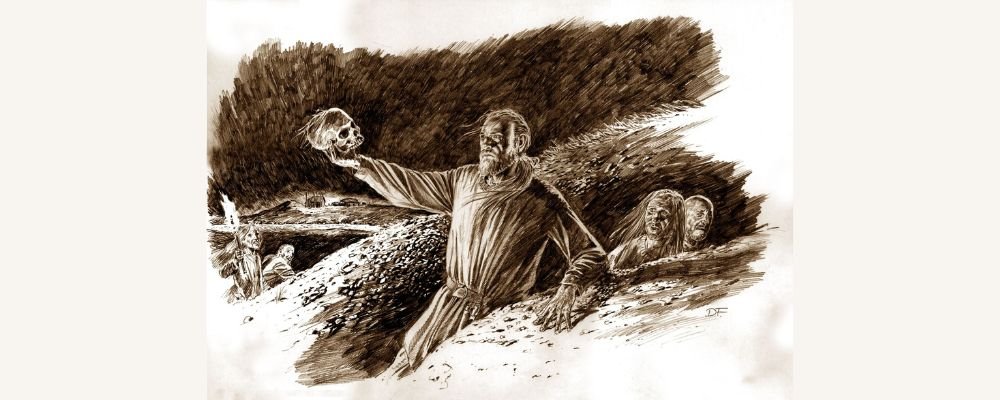 Olaf receives his prophecy
Olaf receives his prophecy
Olaf Returns to Norway
Rumors of a king of Norwegian blood making a name for himself in Ireland soon reached Norway. This worried the Norwegian ruler Haakon, who had made himself unpopular. The sagas specifically mention him taking the daughters of noblemen as concubines and then casting them aside, but there were probably many factors that were making him unpopular.
Haakon sent a man named Thorer to Ireland to find this man, determine if he really is the son of the former king of Norway Tryggvi Olafsson, and bring him back to Norway to be dealt with. But Thorer ended up striking up a great friendship with Olaf and told him everything. Instead of sailing to Norway as a potential victim, he sailed there with a force to claim the throne.
When Olaf Tryggvason arrived in Norway, he found that many of the nobles had already revolted and that Haakon was in hiding. It was not hard for Olaf to win them over to his side.
Haakon was hiding in a pigsty with a servant called Kark. But when Olaf offered a reward for Haakon’s head, his servant killed him, chopped off Haakon’s head, and took it to Olaf. But rather than reward the servant, Olaf had him beheaded as well.
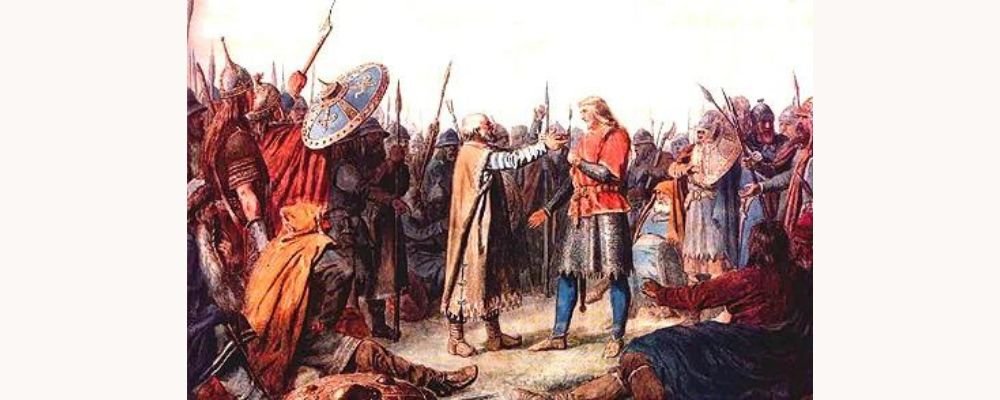 Olaf negotiates with the Norwegian nobles
Olaf negotiates with the Norwegian nobles
Olaf as King of Norway
As the king of Norway, Olaf Tryggvason went about trying to consolidate and expand his territory, and convert it to Chrsitianity.
He traveled around Norway to parts that were currently under Danish rule. He convinced the nobles there to integrate into Norway, and to convert to Christianity, even though many were reluctant.
He then tried to expand his territory into Sweden by proposing marriage to Sigrid the Haughty of Sweden, the widow of the former king of Sweden. She refused him, and one of her main reasons was that he would require her to convert to Christianity. According to some stories, Olaf slapped her with a glove when she refused, causing great offense.
Olaf founded a new capital of Norway at Trondheim in 997, and he built the first Norwegian church there. This was a catalyst for a major push towards conversion. The famous explorer Leif Erksson spent time at Olaf’s court and converted to Christianity. Olaf sent a bishop back to Greenland with Leif to make further conversions. He also sent a bishop to the Orkney Islands to do the same.
He also tortured and killed those who refused to convert. When Raud the Strong refused, he held his mouth open with a wooden pin and fed a snake down his throat. When Eyund Kinnrifi would not convert, a brazier of hot coals was placed on his stomach.
Nevertheless, Olaf does not seem to have become as unpopular as his predecessor Haakon. But this may be the bias of the Christian authors who recorded his life.
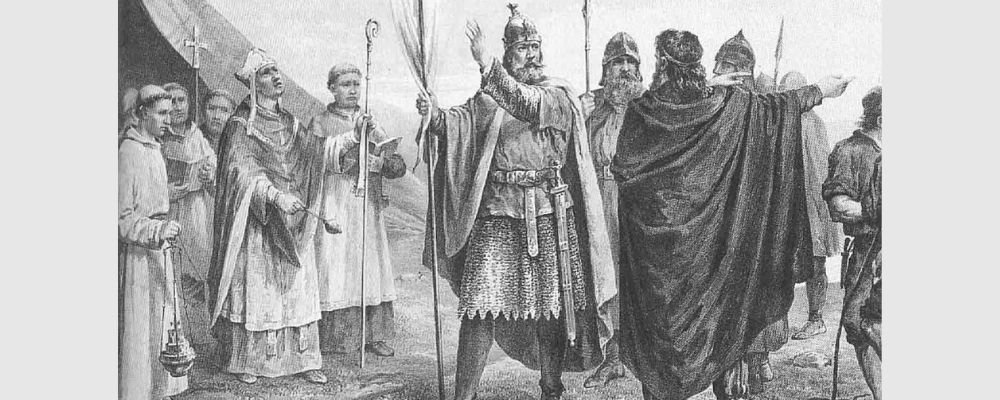 Olaf forcing conversions to Christianity
Olaf forcing conversions to Christianity
Downfall of King Olaf
Still looking to expand his territory, Olaf married Tyra, the sister of King Sweyn I of Denmark. She had fled her husband Burislav of Wendland, and Olaf used this as a pretext to launch an expedition to regain her lands there in 1000.
But not long after he set off, Olaf was ambushed off Svolder Island by a combined force of Sweden, Denmark, Wendland, and the sons of Haakon, all of whom had problems with King Olaf and his expansion plans.
Olaf lost the battle, and reportedly committed suicide rather than being taken by jumping into the sea in full armor.
However, others say that he actually survived the jump, made it to shore, and joined a monastery. There are reports of him in the Holy Land in the 1040s.
 Final sea battle of Olaf Tryggvason
Final sea battle of Olaf Tryggvason
Fact of Fiction
Olaf Tryggvason’s story is certainly a fantastical one. At different times he is found across Europe from the Kievan Rus to Ireland. He is an unparalleled warrior who always wins until his final defeat. Olaf also had several wives (not unlike Ragnar Lothbrok), and had his fingers in all the Viking politics of the day.
As the king of Norway, he forcibly converted the country to Christianity. While many were reluctant, this seems to have started a chain that led to the widespread conversion of the Vikings there. This is his real legacy, as this is why the Icelandic Christian authors wrote about him. Whether everything they included in their stories actually happened is questionable.
The post <strong>The Incredible Saga of Olaf Tryggvason</strong> appeared first on Norse and Viking Mythology.
Four Warriors Buried in 11th Century Tombs in Pomerania Came From Scandinavia, claim Researchers

The four warriors hidden with rich severe offerings in the main component of the cemetery in


